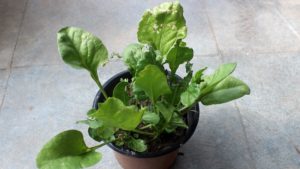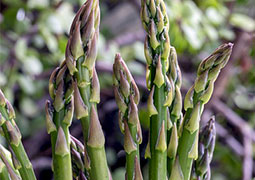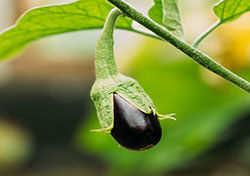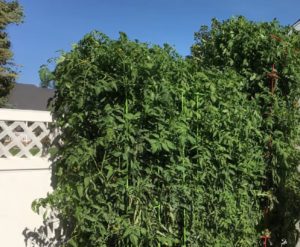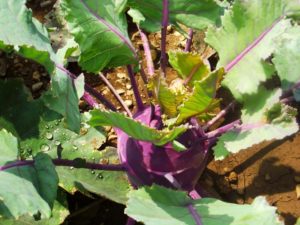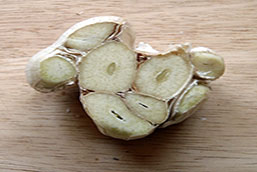There are many types of lettuce found all over the world, each with varying growing requirements, storing methods, and more importantly harvesting techniques. This is why it is very important to familiarize yourself with different harvesting tricks and techniques to avoid killing the entire plant while picking a few leaves.
Harvesting lettuce is relatively easy and when done properly can prolong the plant’s life and encourage vigorous and health growth.
So, if you are ready to indulge yourself with some delicious lettuce wraps or hearty green salad, prepare your gardening equipment, take note of these harvesting steps, methods, and tricks and make your first successful lettuce harvest.
Growing Conditions
If you are maintaining a garden in a relatively cooler area and thinking what kind of plant will grow best in that condition, lettuce can be one of your best options. Growing this cold-loving plant can be quite a work so in order to successfully harvest a good quality one, you will need to follow some of these growing guides written below.
- Weather Conditions
Lettuce grows well in cooler places with a temperature of 60 to 65 degrees F (15-18 degrees C) as warmer weather tends to make its leaves taste bitter. When the temperature reaches 80 degrees F (26 °C), the plant will flower and produce seeds. It can tolerate a temperature of up to 85 degrees F (29 °C), for as long as the nights are cool.
- Sun Exposure
Since lettuce thrives well in cooler conditions, it prefers to be exposed in partial sun. Especially if you are growing your lettuce in warmer areas, you should plant your lettuce in partially shaded areas or spots in your garden that receive only a few amount of sunlight in the morning.
If your entire garden is on the sunnier side of the Earth, you can use a nylon net or a screen to cover your lettuce and protect it from direct full sunlight.
- Soil Requirements
If you want to grow healthy and fresh lettuce, you must plant them in rich, moist soil and at the same time well-drained with a pH between 6.0 and 7.0. Adding organic compost and constant supply of nitrogen will make your lettuce grow faster and healthier.
Keeping the soil moist but also well-drained can be quite tricky that is why you have to monitor the condition of the soil at all times.
- Watering
Lettuce grows better when watered regularly. Not receiving an adequate amount of water will definitely affect its growth as well as the quality and taste of its leaves. If you are growing lettuce in warmer areas, you might need to water it more frequently than usual.
On the average, you need to water your lettuce one or twice a week or every after 4 to 5 days. However, be cautious not to overwater your plant.
- Fertilizer
If you are already growing your lettuce in a fertile soil, there is no need for you to use any more fertilizers. But, in case you have to work with poor soil, choose the nitrogen-rich fertilizer as this element is an important factor in encouraging a healthy and vigorous lettuce growth.
- Companion Planting
Lettuce needs a companion plant are natural insect repellants and some of the best options you have will be chives and garlic. These plants are known to drive away aphids which are the main pests that feast on lettuce.
There are also other herbs, plants, and vegetables that may not be as good in repelling pests as the ones mentioned above but they grow better when planted side by side with lettuce.
| Lettuce Type | Growth Time |
| Romaine Lettuce | 60 to 80 days |
| Leaf Lettuce | 30 days |
| Iceberg Lettuce | 55 to 90 days |
| Boston Lettuce | 45 days |
| Bibb Lettuce | 55 to 60 days |
| Crisphead Lettuce | 70 to 100 days |
| Batavian Lettuce | 30 to 45 days |
| Frisée Lettuce | 55 days |
| Escarole Lettuce | 60 to 70 days |
Harvest Period
- Romaine Lettuce- This type of lettuce typically reaches its maturity in a matter of 65 to 70 days. You will also know that they are ready for harvest when the leaves are lush, dark green in color and open.
- Loose Leaf- You will know that your loose leaf lettuce is ready to be harvested when the leaves are about 4 inches long. But, make sure to harvest your lettuce before it bolts as it may change the quality and taste of the leaves.
- Butterhead lettuce- After planting, it usually takes 55-60 days before a butterhead lettuce can be harvested. Another indication that your butterhead lettuce has already reached maturity is when the head is compact and firm to touch and the size is about 6 to 8 inches in diameter.
Process Of Harvesting Lettuce
Lettuce comes in plenty of varieties but these 4 are the main or common types found in most of the gardens, farmer’s market, or grocery stores, namely: romaine, loose leaf, butterhead, and iceberg.
For this article, we will only tackle the first three types. Since each of these lettuce types has their unique harvesting process, we will discuss them one by one.
- Romaine Lettuce
In harvesting romaine lettuce, you can choose among two options: pick up the entire head all at once or harvest the outer leaves and leave the inner portion to continue thriving.
- There are two ways to harvest the head of the lettuce all at once, but since your plan to harvest without killing the entire plant, we will only consider one method.
- To harvest romaine lettuce all at once, you need to cut it from the base, about 1 inch above the surface of the soil, leaving the roots intact on the ground.
- In another 55 to 60 days, you will be able to harvest another romaine lettuce, however the leaves might be a little looser than the first one.
- Alternatively, you can just harvest romaine lettuce by simply picking the outer leaves.
- To do this, carefully yet firmly snap the leaf from the base of the plant. Remember to twitch it downwards to avoid pulling off the entire plant.
- Let the inner leaves grow further until they are 4 inches tall and ready to be harvested.
B. Loose Leaf
- Once the leaves of a loose leaf lettuce grow to at least 4 inches tall, it means that they are ready to be harvested.
- Closely similar to the process of harvesting romaine lettuce, snip each leaf off of the plant just above the crown. Cutting into or below the crown will definitely kill your entire plant.
- You could also harvest a bunch of leaves all at once by using a sharp pair of garden shears and cutting above the crown of the plant.
- For your loose leaf lettuce to continue to grow, harvest the older and mature leaves first and leave the new, younger ones.
C. Butterhead Lettuce
Similar to romaine lettuce, harvesting butterhead lettuce can also be done in two different methods. You could either harvest the entire head or just pick a few leaves as you need them.
- In doing the first method, you will need a sharp knife or garden shears. Avoid pulling off the head from the ground, otherwise the entire plant will die.
- Using your one hand, grab the outer leaves of the butterhead lettuce and use the other to cut the entire head from the base of the plant. Make sure that the roots are left still intact onto the ground.
- In two to three weeks, the roots will grow another bunch of leaves which you can harvest for the second time.
- The other way to harvest butterhead lettuce is by picking off a single or a bunch of leaves, as needed.
- Butterhead lettuce grows new leaves from the center so to encourage your lettuce to grow further, harvest the outer leaves first.
- You could either use your finger to snap the leaves off of the head or cut them using a pair of scissors or garden shears. Just make sure not to damage the crown of the plant.
Storing And Using
- If you are storing a type of lettuce that has a firm core, for example, romaine or iceberg, the first thing that you have to do is to cut the core first to prolong its shelf life. You can skip this part if you are storing any lettuce with loose and tender leaves like buttehead and loose leaf.
- Wrap the head or loose leaves with a few plies of paper towels. This process will absorb any excess water from the lettuce, at the same time will keep the leaves moist. You could damp the paper towel if the lettuce leaves feel quite dry.
- Put the leaves inside a container, whether it is a ziplock bag or a plastic tub. Squeeze out some air from the plastic bag but do not entirely compress it. If you are using a solid plastic container, you could leave a small opening to let some air circulate. More air in the container will brown the edges of the leaves, while poor respiration will affect the taste, so it is important that the amount of air inside the container is only controlled.
- Place the lettuce inside the crisper compartment and be careful not to compress it with heavy items that will crush the leaves.


